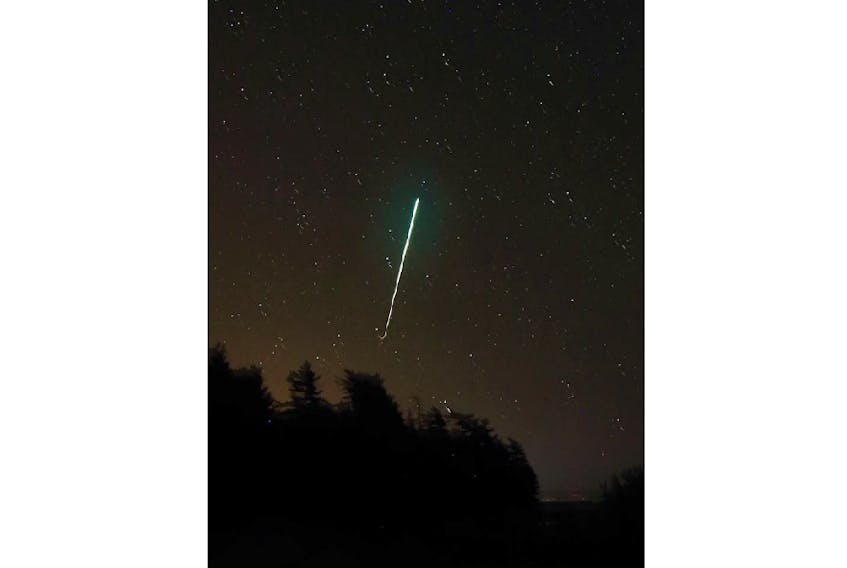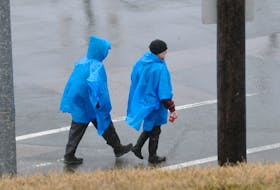Did you see it? So many did.

Reports were coming in from all corners of the region. People from Shelburne, N.S., to Cascumpec, P.E.I., were sharing their stories through social media. Reports of a large tail, and a bluish green colour were common. The streak was observed Sept. 13 just after 10 p.m. ADT and many say it lasted three to four seconds.
Lucky for all of us, Brenda Levy-Tate was out taking night-sky photos when the bright light caught her eye. She turned the camera around just in time to take a one-in-a-million picture!
What was it? Well, this is not a typically active time for meteors – there are no significant meteor showers underway – but sporadic meteors are always possible. The streak of light that wowed so many was a meteor = a very bright meteor. A dazzlingly bright meteor is a fireball. Although a fireball has no official definition, many astronomers consider a meteor that looks brighter than Venus to be a fireball.
Fireballs aren’t very rare. If you watch the sky regularly on dark nights for a few hours at a time, you’ll probably see a fireball about twice a year. Any very bright fireball – as bright or brighter than the half-moon – represents a possibility that the meteoroid producing the light will make it to the ground. Once a meteoroid lands, it is called a meteorite. Freshly fallen meteorites can be of considerable scientific value, and they may be worth money, too. If you see a fireball that fits this description, write down all the = information so your sighting can help scientists find the meteorite and determine where it came from. To be prepared, learn more about reporting a meteoroid.
You can also reach out to one of the very qualified experts you’ll find at the Royal Astronomical Society of Canada.
Look up, you never know…
- Want more weather information? Visit WeatherByDay.ca
- Have a weather question, photo or drawing to share with Cindy Day? Email [email protected]
Cindy Day is the chief meteorologist for SaltWire Network.









